Horror experts on Hollywood's 'true' horror stories: Fact or frightful fiction?
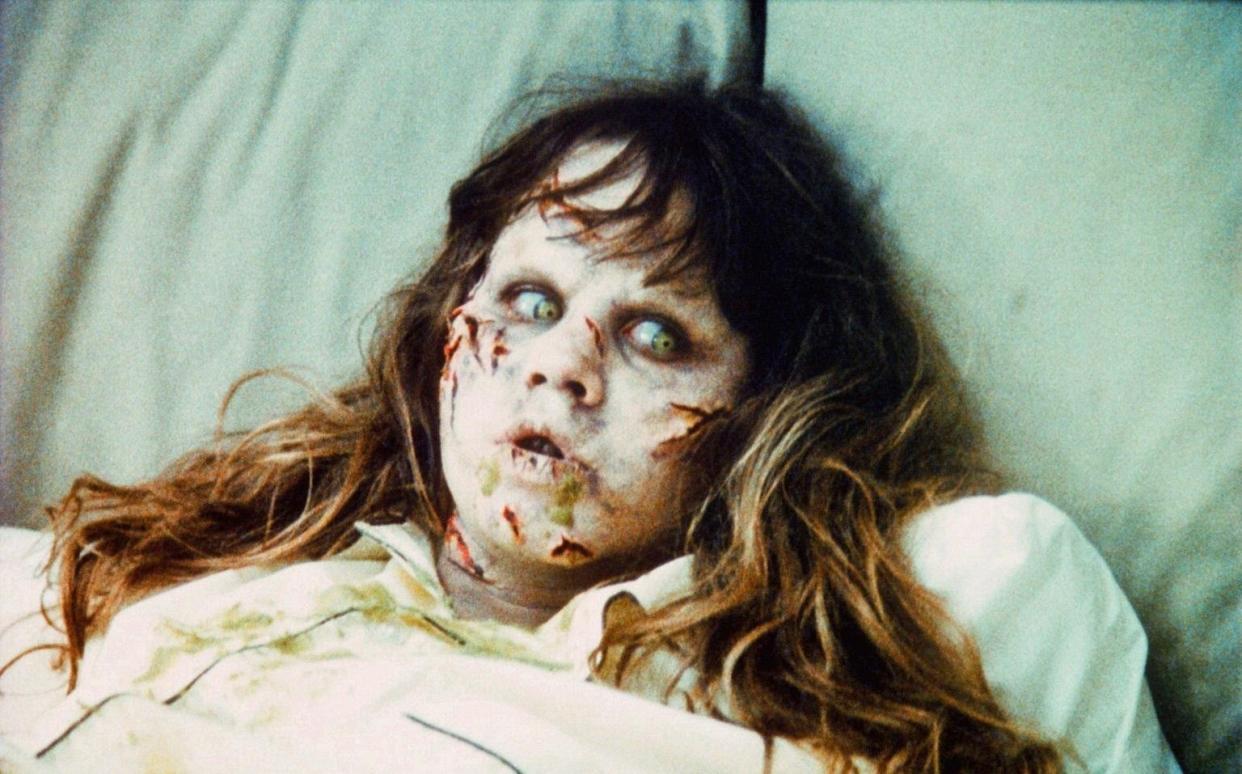
The just-released trailer for Winchester: The House That Ghosts Built, the upcoming Helen Mirren movie, came with a promise familiar to the horror genre: “Inspired by actual events.”
But movie taglines are sales pitches, not binding contracts. How real — really — are Hollywood’s supposedly fact-based tales of terror?
Watch the trailer for Winchester: The House That Ghosts Built:
“Most true-story horror films are only very loosely based on the reality of actual events,” says David Weiner, creator of the pop-culture site It Came From… and former executive editor of Famous Monsters of Filmland. “Filmmakers often use said true story as a jumping-off point, and then embellish to heighten the scare factor.”
We called on horror and true-crime experts to help us sort the truth from the “truthiness” in some of Hollywood’s most iconic fright films. Here are the findings.

The movie: The Exorcist (1973)
The claim: “Somewhere between science and superstition…”, per the trailer. In other words, it doesn’t actually claim to be a true story.
The plot: In present-day Georgetown, an anguished mother (Ellen Burstyn) reaches out to Catholic priests (Max von Sydow and Jason Miller) after she suspects her daughter (Linda Blair) has been possessed by the devil.
Watch the trailer for The Exorcist:
The legend: In the 1940s, a boy in St. Louis — variously identified as Roland Doe, Ronnie Doe, Robbie Mannheim, and Ronald Hunkeler — is possessed by a demon and requires an exorcism. Sometime after, Georgetown University undergrad William Peter Blatty, who penned the same-titled, bestselling novel that he would adapt into the Oscar-winning Exorcist screenplay, hears a theology professor [riff] about a case of demonic possession that had recently occurred in the Washington area,” Washingtonian noted in a profile of the writer. “Something about it struck a nerve.”
The truth: “Blatty’s novel is not at all true to the events which inspired his story,” says Mark Ramsey, host and producer of the acclaimed podcast series Inside The Exorcist. “To some degree, this was intentional. He promised the priests who told him about the original exorcism that his version of the story would not too closely reveal the true facts. They were concerned about the privacy of the victim of possession. This is one reason, for example, why the gender of the victim was changed from male to female.”
The bottom line: As a movie, Ramsey says, The Exorcist is actually “quite faithful.” To the novel, that is.
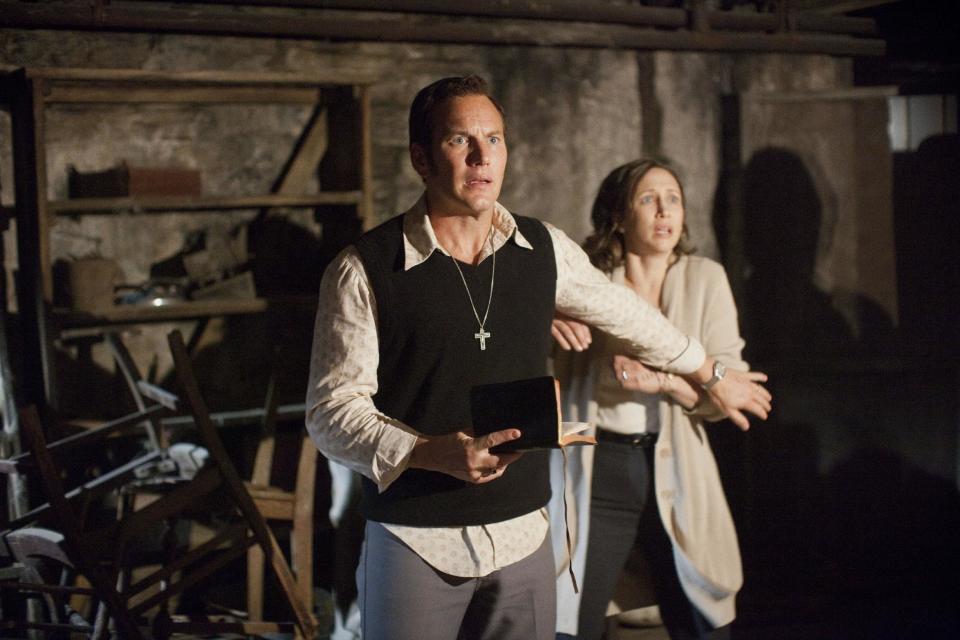
The movie: The Conjuring (2013)
The claim: “Based on the true story of the Warrens,” per the trailer. Another trailer features on-camera testimony from the real-life family at the center of the tale.
The plot: In 1971, ghost hunters Ed and Lorraine Warren (played by Patrick Wilson and Vera Farmiga, respectively) are called upon by a woman, Carolyn Perron (Lily Taylor), whose family is being terrorized by their house — or, as it turns out, a witch named Bathsheba.
Watch the trailer for The Conjuring:
The legend: In the 1970s, the Perrons — of Harrisville, R.I. — find themselves in a quaint farmhouse “[living] among the dead,” as family chronicler Andrea Perron would put it, and reach out to the Warrens for help.
The truth: “[The Conjuring] toes the line with the reported true-life details to a point,” Weiner says.
Indeed. The Warrens, the Perrons, the 1970s, the Harrisville farmhouse — these are all points where the historical record matches up with the movie. The rest is notoriously fuzzy. Exhibit A: The couple who now lives in the Perrons’ former Harrisville home bitterly disputes the structure’s tortured on-screen backstory. “There were no murders, no suicides,” owner Norma Sutcliffe told Rhode Island’s Providence Journal in 2014. “There’s no reason a ghost would exist in this house. … It’s not real.” Sutcliffe and her husband sued the studio behind The Conjuring, seeking damages for the curiosity-seekers they say the film has brought to their door.
To the Providence Journal, Andrea Perron agreed that there was no Bathsheba legend (outside of Lorraine Warren’s own declaration), and said that her family’s encounter with the Warrens ended with the couple being thrown out of the house by her angry father — not, as in the film, with a triumphant exorcism.
“It turns out that the Warrens were a lot less involved with the family than depicted in the film,” Weiner says.
The bottom line: The Perrons, who participated in the marketing of The Conjuring, definitely believe something was up with their house. (Angela Perron wrote a trilogy on the subject.) Lorraine Warren definitely thinks the filmmakers “did a pretty good job” of telling the story. And Weiner definitely thinks “director James Wan is not immune to goosing the story to serve the requirements of a summer popcorn flick.”

The movie: The Conjuring 2 (2016)
The claim: “From the true files of Ed and Lorraine Warren … the most documented case in paranormal history,” per the trailer.
The plot: Ed and Lorraine Warren (the returning Patrick Wilson and Vera Farmiga) travel to London to tackle the case of a haunted house and a possessed girl named Janet Hodgson (Madison Wolfe).
Watch the trailer for The Conjuring 2:
The legend: In 1977, Peggy Hodgson calls a newspaper to report strange things happening in her house in the London suburb of Enfield. Soon, paranormal investigators — including the Warrens — beat a path to the family’s door. Pictures are taken. Recordings of Peggy’s daughter, Janet, speaking in a bark of a man’s voice — identified as Bill — are made. Skeptics are born, as are believers.
The truth: As with the Perron case of The Conjuring, the Warrens’ involvement in the so-called Enfield Poltergeist or Enfield Haunting was enhanced for The Conjuring 2. “They did turn up once, I think,” another paranormal investigator from back in the day said.
As for the rest: “I can’t achieve resolution,” Will Storr, who wrote a book about the paranormal world, concluded in a piece on Janet Hodgson for the London Telegraph. “I can only think, ‘Oh yes, Enfield. That was weird.'”
The archival material drives home that last point. “Perhaps the most effective moment of The Conjuring 2 is the inclusion of the actual, real-life recording of Janet Hodgson purportedly channeling … Bill,” Weiner says.
The bottom line: “The Warren files are juicy source material for sure,” Weiner says, “but filmmakers in general love to ratchet up the tension and scares for the benefit of the audience.”
This goes for the Annabelle movies as well. As Lorraine Warren told us in 2014, a Raggedy Ann doll — à la the real Annabelle, the one kept in the glass case at the Warrens’ (currently closed) occult museum in Connecticut — would have been “much too innocent-looking” to star in the horror spinoff. A porcelain doll was cast instead.
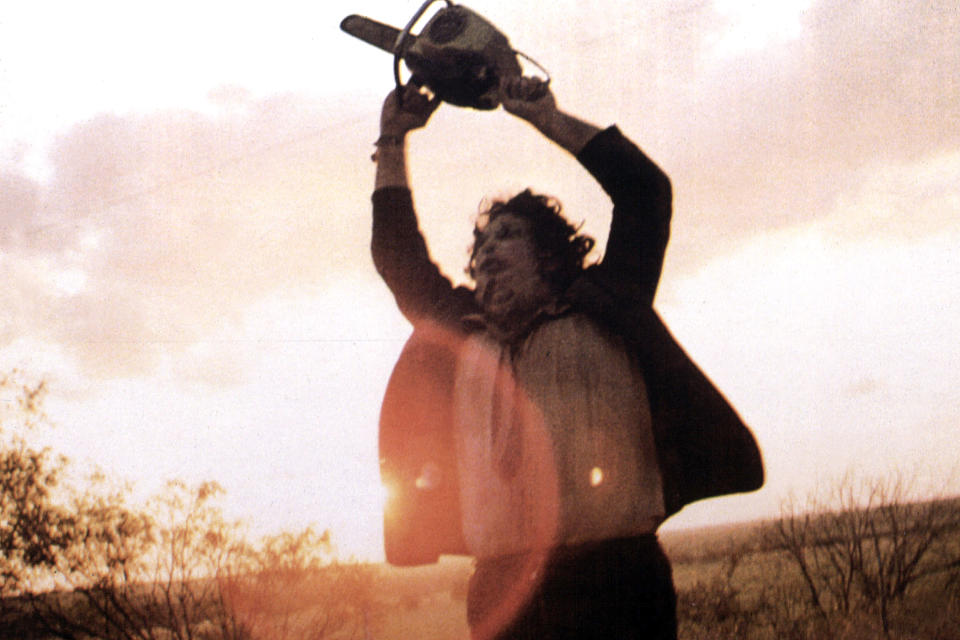
The movie: The Texas Chain Saw Massacre (1974)
The claim: “The film which you are about to see is an account of the tragedy which befell a group of five youths, in particular Sally Hardesty and her invalid brother, Franklin,” per the opening crawl of the Tobe Hooper gore classic.
The plot: Five young people get chased, and all but one killed by a chainsaw-wielding psycho, Leatherface (Gunnar Hansen), and his family. The 2003 Michael Bay-produced remake of the same name, billed as “inspired by a true story,” follows the same map.
Watch the trailer for The Texas Chain Saw Massacre:
The legend: According to the film, the legend is the massacre noted in the title.
The truth: “I can’t recall having heard of these particular crimes,” critic Roger Ebert wrote in his 1974 review of the original movie.
Ebert, of course, was not uninformed: There was no Texas chainsaw massacre.
There was, however, Ed Gein, the “Butcher Ghoul” of Wisconsin, who confessed to the murders of two women in 1957 but gained even more notoriety for his farmhouse of horrors, where he fashioned clothes and other objects from human skin and body parts.
The Texas Chain Saw Massacre is one of three major horror movies linked to Gein’s grisly tale. Alfred Hitchcock’s Psycho and Jonathan Demme’s The Silence of the Lambs are the others.
“None of them is really ‘true’ to the Gein case, [but] each lifts a different [thread] from the story,” says true-crime author Harold Schechter (Deviant: The Shocking True Story of Ed Gein, the Original Psycho).
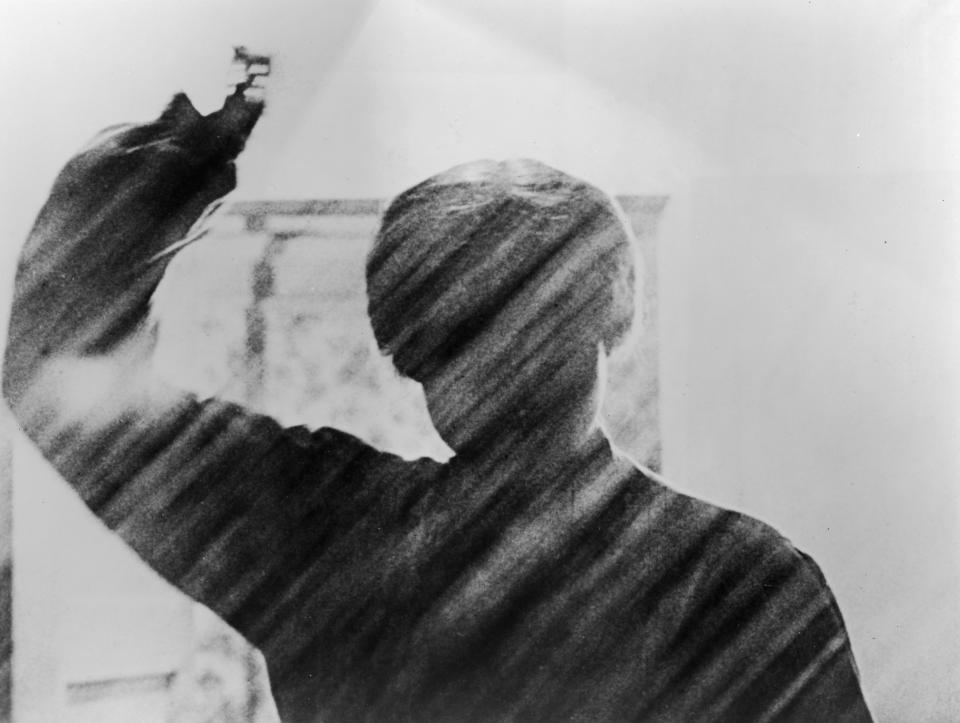
Psycho, about a mother-obsessed killer named Norman Bates (Anthony Perkins), was based on the novel of the same name by Robert Bloch. “Bloch was living in Wisconsin at the time the Gein horrors came to light, and was reading all these news accounts about Ed’s pathological Oedipal issues,” Schechter says. “[He] took both the mama’s-boy element and the necrophilia.”
Silence of the Lambs, featuring the cannibal and serial killer Dr. Hannibal Lecter (Anthony Hopkins), was adapted from the Thomas Harris novel of the same name. “Harris, of course, used the skin-suit aspect,” Schechter says.
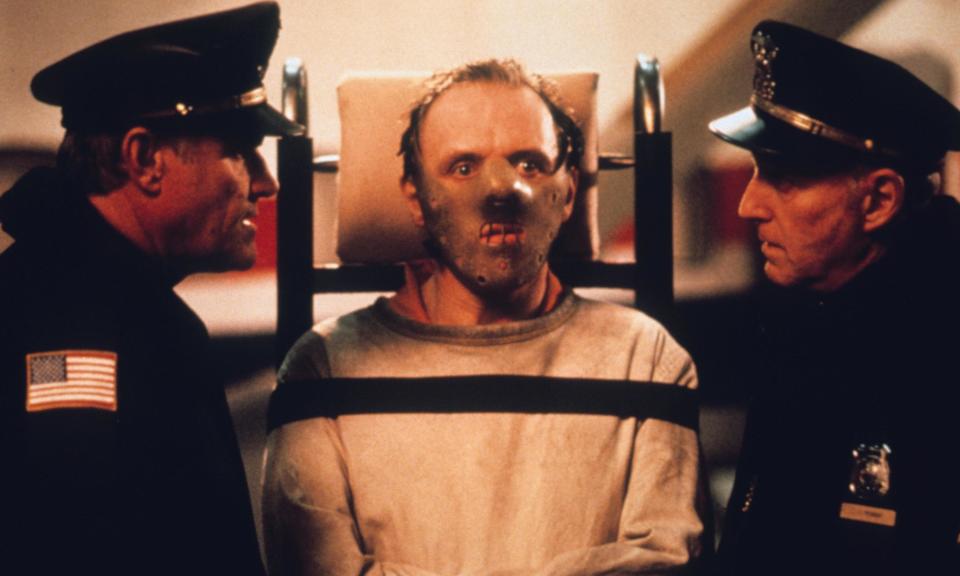
And then there’s The Texas Chain Saw Massacre. Says Schechter: “Tobe Hooper did a powerful job of evoking the unholy squalor of Ed’s farmhouse.”
The bottom line: Of the trio of Gein-inspired movies, only Texas Chain Saw attempted to pass itself off as a work of true heinous crime.
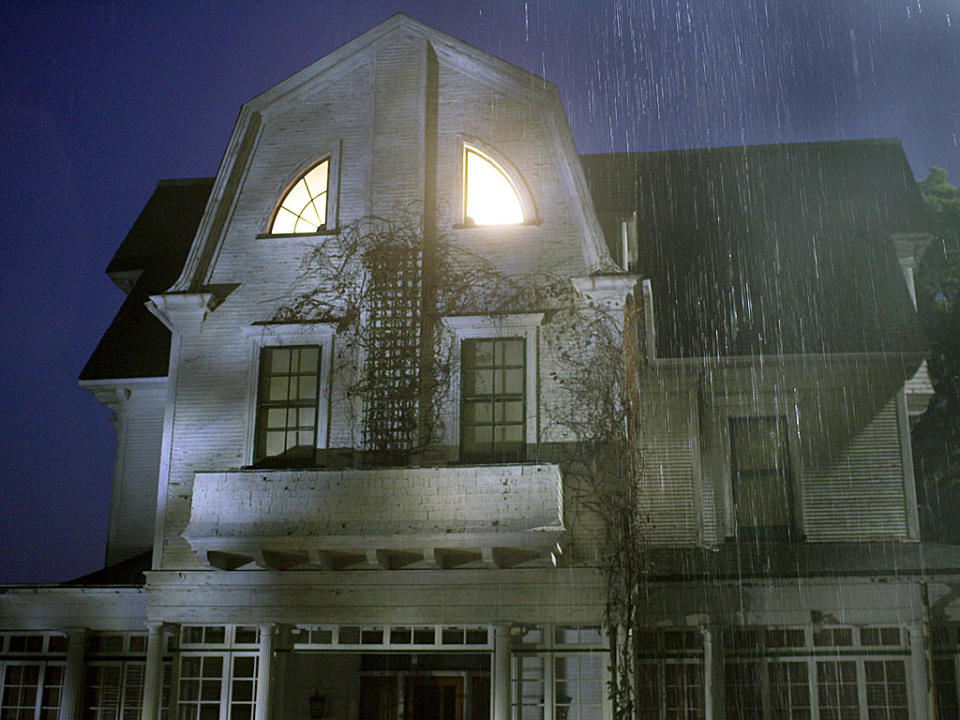
The movies: The Amityville Horror, the 1979 original and the 2005 remake
The claim: The 1979 movie’s trailer bills the film as “from the bestselling book that made millions believe in the unbelievable”; the opening credits cite the Jay Anson book of the same title as the source material. The trailer of the 2005 version, by contrast, flatly declares that it’s “based on the true story”; its opening sequence, rife with would-be archival footage, plays up the ripped-from-the-headlines angle.
The plot: In 1975, on New York’s Long Island, in the village of Amityville, George and Kathy Lutz (James Brolin and Margot Kidder in the original; Ryan Reynolds and Melissa George in the remake) buy — and subsequently flee — a haunted home that was the site of a mass shooting.
Watch the trailer for The Amityville Horror:
The legend: In 1974, on New York’s Long Island, in the village of Amityville, six members of the DeFeo family are shot to death in the dark of night by, per a subsequent conviction, the immediate clan’s sole survivor, Ronald DeFeo Jr. A year later, the Lutzes move into the DeFeo family’s old house. Two years after that, Anson publishes The Amityville Horror, billed as “a true story,” and now found in the nonfiction section of your local library. It recounts the purportedly 28 freaky days that the Lutzes spent at 112 Ocean Avenue with their three children.
The truth: Though the 2005 remake tries harder to establish its true-story credibility — and name-checks the DeFeos, which the 1979 version doesn’t — the earlier film is more true to the Lutzes’ story (as told by Anson).
“[It] makes sure to include as many of George and Kathy Lutz’s ‘true-story’ haunted house claims as it can in its running time,” Weiner says, “complete with off-season buzzing flies, [the imaginary friend] Jodie, and [the hidden basement space known as] ‘The Red Room.'”
The Ryan Reynolds version, meanwhile, “quickly goes off the rails,” Weiner says, “with an extended possession subplot and supernatural encounters not seen in the book.”
The bottom line: As long as Hollywood has been making movies about the DeFeo house — the latest (and the 18th) feature-length Amityville movie, Amityville: The Awakening, opens this weekend — the Lutzes’ story has been challenged and doubted. Among the family’s fiercest defenders: the seemingly ubiquitous Ed and Lorraine Warren, who were among the paranormal first responders at the house in 1976. (Lorraine Warren received a credit as “demonology adviser” on 1982’s Amityville II: The Possession; The Conjuring 2 opens with the Warrens on the Amityville case.)
One thing that can’t be disputed is that the road to horror fame wasn’’t easy for the Lutzes. Lawsuits abounded for years on a variety of fronts. The couple divorced in 1988. Kathy Lutz died in 2004 at age 57; George Lutz died in 2006 at age 59. One of their own grown children called George Lutz “a professional showman” who exploited the family.
Perhaps an early Washington Post story on the Lutzes (and their already growing mountain of litigation) got it most correct when it referred to the case as “The Calamityville Horror.”
Watch the trailer for Amityville: The Awakening:
Read more from Yahoo Entertainment:
